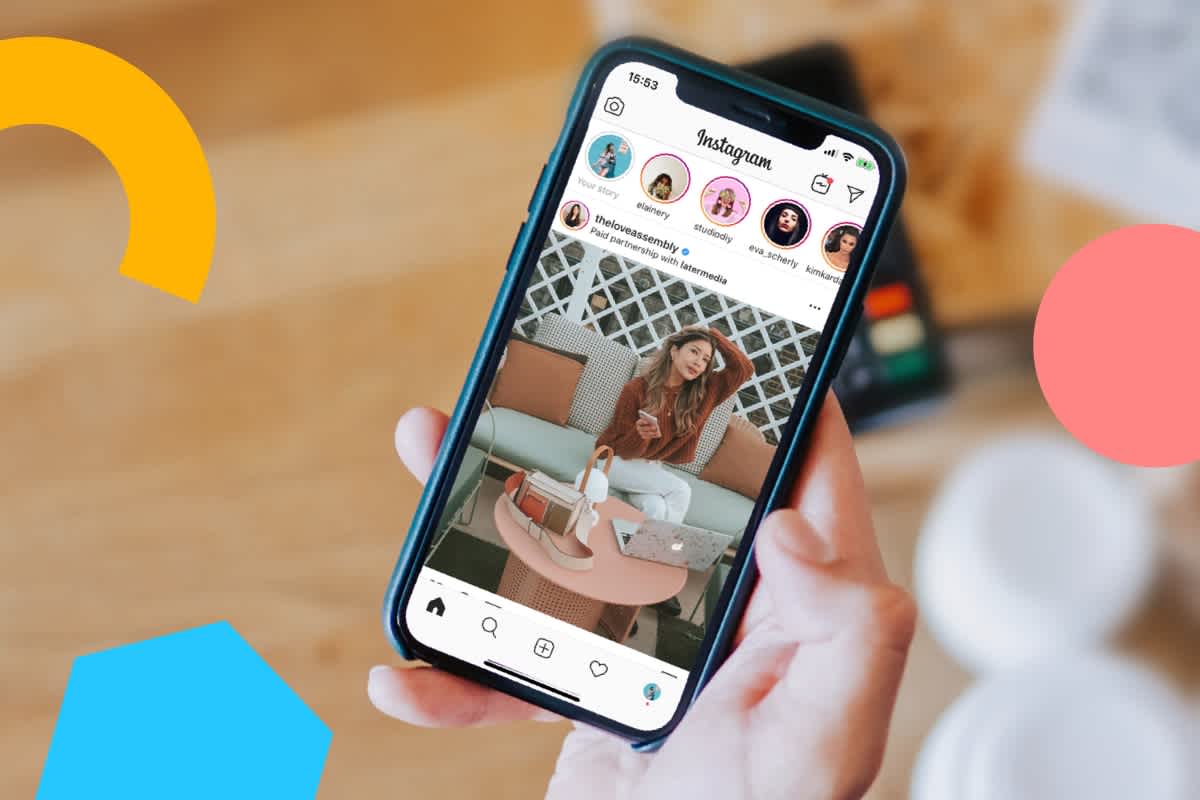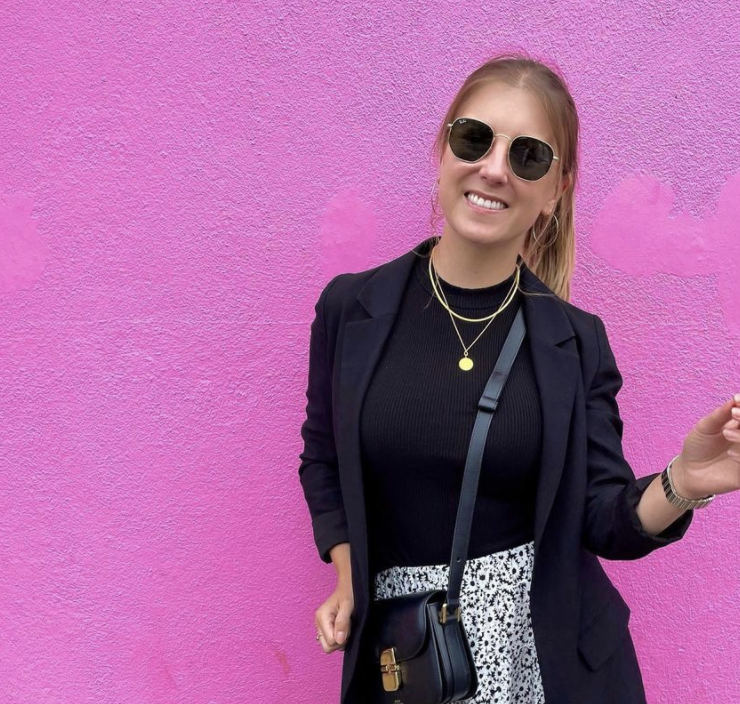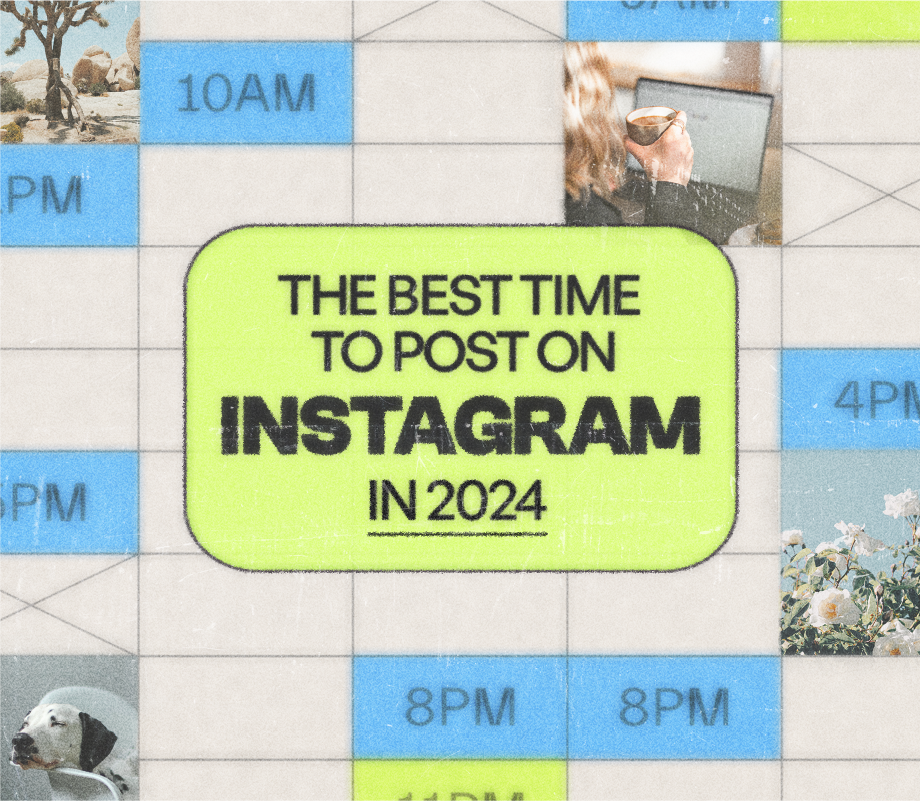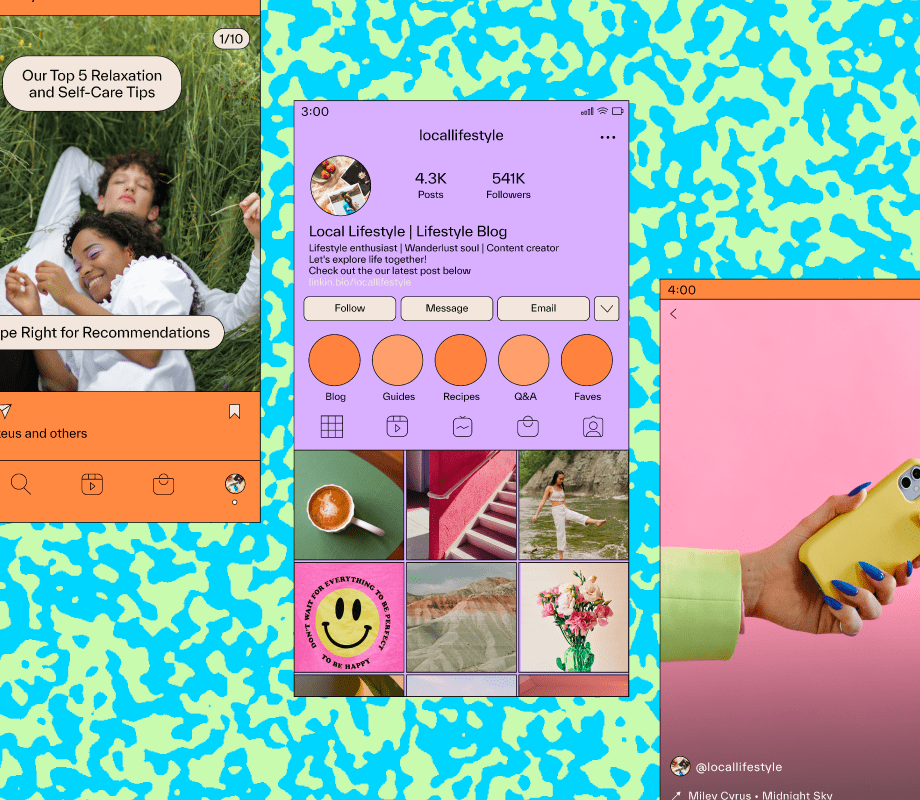Instagram branded content tools allow you to manage and track your paid partnerships directly within the app.
You have full control of when an influencer can tag you as a paid partner and gain real-time insights into how posts are performing — making your influencer partnerships more efficient, transparent, and trackable.
Ready to find out how to set up Instagram branded content tools for your business? We’re covering all the details in this blog post.
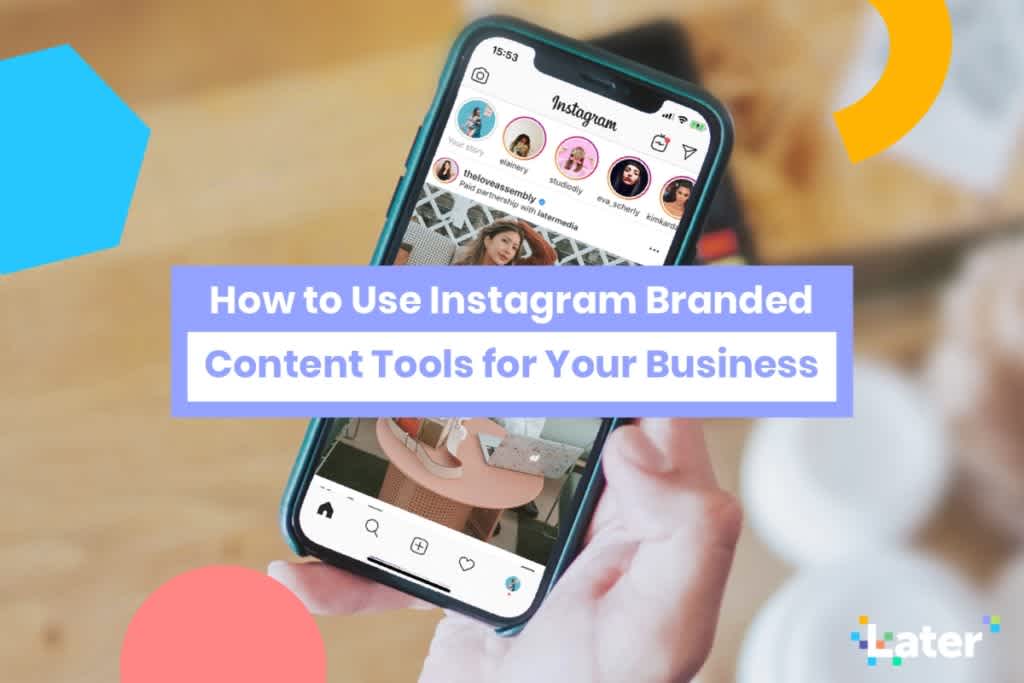
What are Instagram Branded Content Tools?
Before we dive into the tools, let’s clarify what “branded content” is.
According to Instagram branded content is “a creator or publisher’s content that features or is influenced by a business partner for an exchange of value (for example, where the business partner has paid the creator or publisher).”
So for a brand, this can be any content created by an Instagram partner, influencer or ambassador as part of your Instagram strategy.
And as an influencer or creator on Instagram, branded content is any post that was commissioned, sponsored or paid for by a brand.
To help make paid brand partnerships more obvious for people scrolling the feed, Instagram have created tagging features and insights for business and creators on the platform: Instagram branded content tools.
Instagram’s branded content tools are designed to help businesses and creators work together in a more transparent and seamless way.
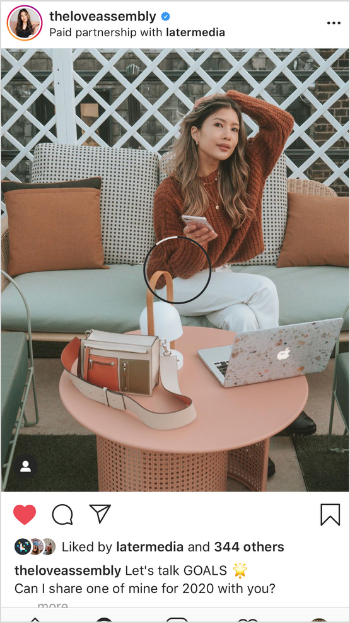
Which can only be a good thing — as businesses, brands, and political figures are increasingly expected to be crystal clear in their disclosure of paid partnerships.
In fact, Instagram recently announced that all paid partnerships between political parties and creators must be published using their branded content tools, so each post has the “Paid Partnership with” label clearly visible.
For content creators, being able to label a post as an official paid partnership adds an extra level of authenticity to their content — establishing them as a recognized brand partner.
This can be a huge advantage for content creators looking to build their reputation and gain more brand partnerships. Especially if they’re a micro-influencer trying to expand their business portfolio.
So whether you’re a brand or a creator on Instagram, having your branded content tools and features in place is a win-win situation!
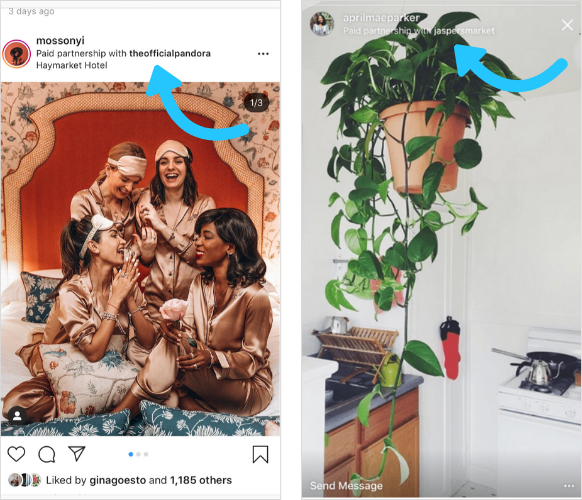
Plus! The “paid partnership with” label can also act as a valuable form of disclosure for content creators. However, it’s worth noting that the FTC also recommends including a clear and accurate disclosure in a post’s caption.
Just starting out in the world of influencer marketing? We have you covered! Our FREE Influencer Marketing Strategy Guide will kickstart your branded partnerships. Sign up below to have it sent straight to your inbox:
Who’s Eligible to Use Instagram Branded Content Tools
To get started with Instagram’s branded content tools, you’ll first need to meet Instagram’s Eligibility Standards.
Here’s a quick overview to see if your eligible:
Content creators/publishers must have a Business or Creator account. Business partners must have a Business account to be tagged as a paid partner. If you haven’t made the switch yet, you can follow Later’s step-by-step guide here.
Content creators/publishers must have an “authentic, established presence.”
Content creators/publishers must comply with Instagram’s Community Guidelines.
Content creators/publishers cannot be a government official who is subject to government rules or ethics. Find out more about Instagram’s stance on this here.
Once you meet these requirements, it’s super easy to get set up and start using Instagram branded content tools!
How to Set Up Instagram Branded Content
In order to start benefiting from Instagram branded content tools, there are different steps for businesses and content creators to follow.
Brands and Businesses: Approve Tag Requests Ad Hoc or Curate an Approved List of Partners
As a brand or business, all you need is a Business account on Instagram to start being tagged in branded content posts from your influencer network.
By default, you’ll have to manually approve any branded content posts you’ve been tagged in — but you can disable this in your account settings.
Simply go to your Settings, select “Business”, and open the “branded content” tab.
From here, you can toggle “Manually Approve Tags” to be on or off.
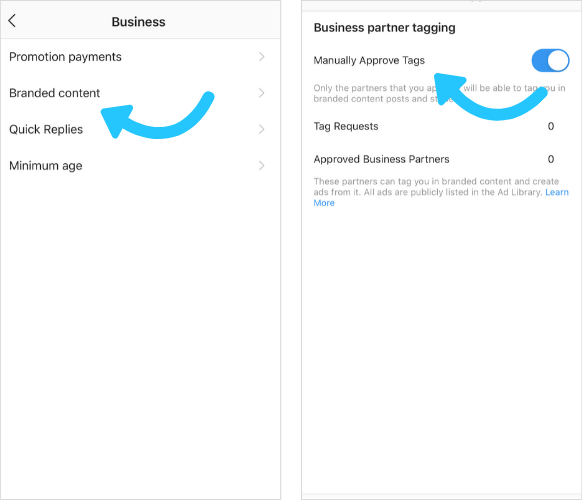
However, it’s generally a good idea to keep approval turned on so you can control who is labelling themselves as an “official” brand partner on Instagram.
From this tab you can also review any incoming “Tag Requests,” and curate your own list of “Approved Business Partners” for the content creators you work with on a regular basis.
Adding a content creator as an approved business partner will help speed up the whole process, as they’ll never have to wait for you to approve their request before they can hit publish.
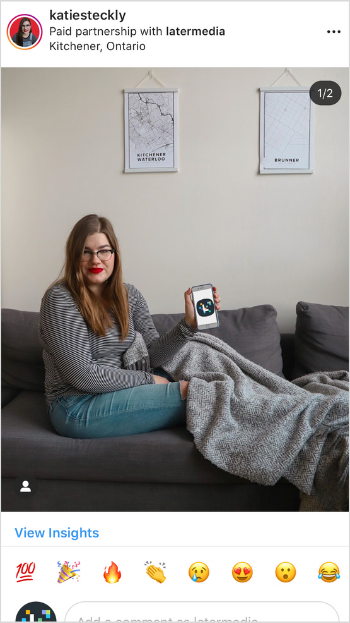
It can also help form long-lasting partnerships, which can only strengthen an existing relationship and help improve your strategies on both sides.
You’ll receive a notification every time they tag you in a branded content post, and be able to see their post performance insights in just one tap. Plus, you can always remove someone from your “Approved Business Partners” list at any time!
Influencers and Content Creators: Set Up Branded Content Tools
As a content creator, you can now add the “paid partnership” label to any of your posts, even without a brand partner.
To do this, follow the usual posting workflow. If you don’t see the option to “Add Paid Partnership Label” on the main caption screen, try tapping “Advanced Settings.”
You can add the paid partnership label independently or tag up to two brand partners in your post. When a partner brand approves the request, they will be added to the Paid Partnership label above your post.
They will also be able to see your post’s performance insights.
NOTE: If you’re an influencer or content creator on Instagram and want to tag business partners in your posts, you’ll need to have an Instagram Business or Creator account. Not sure what the difference is? Find out which profile is best for you in this blog post.
How to Use Instagram Branded Content Posts for Your Ad Strategy
One of the major wins of Instagram’s branded content tools is that it’s super easy to promote creators’ branded content posts as feed and stories ads.
This is a huge advantage for brands looking to get more from their ad spend, as an endorsement from a content creator or influencer can carry much more weight with potential customers.
In order to do this, content creators must toggle on the option to “allow business partner to promote” in the advanced settings of an Instagram post.
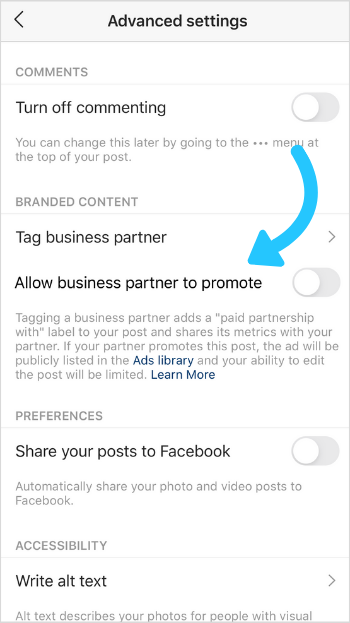
Once a content creator does this, businesses will see the post in their “Ads Manager” under existing posts, and can choose to run it as an ad in feed or stories format.
Instagram branded content tools are a great way to make your influencer partnerships more efficient and trackable, while also being super transparent with your audience.
And with Instagram branded content ads, you can easily choose which branded content posts to promote to reach a much wider audience — no unnecessary back-and-forth required!
Want to take your influencer marketing to the next level? Take entrepreneur Gretta Van Riel’s free Instagram course Influencer Marketing 101 to bring your strategy up to speed:
Like This Post? Pin It!

